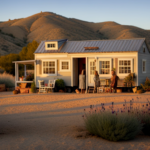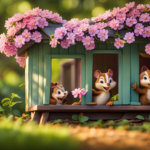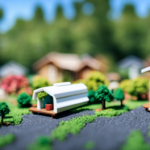Beginners Guides
Episode Of Tiny House Big Living Where House Is Vertical
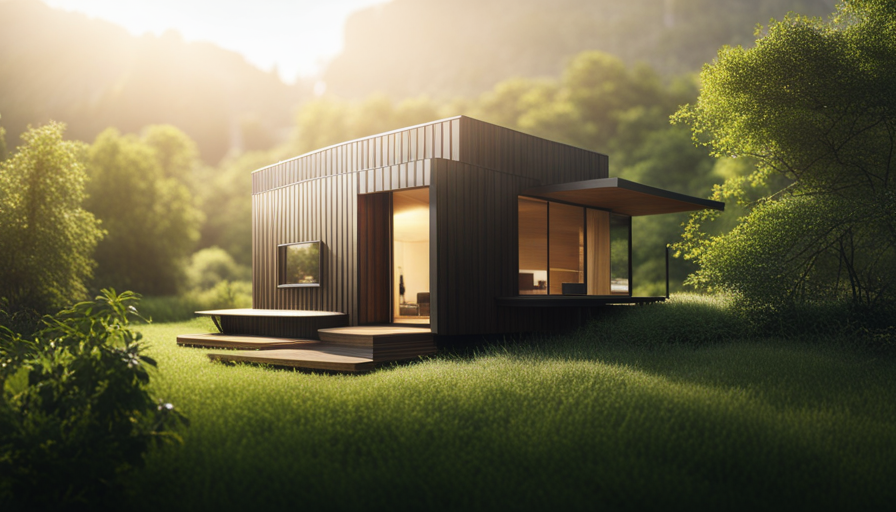
Oh, the marvels of living in a tiny house! Just when you believe you’ve experienced everything, an episode from ‘Tiny House Big Living’ emerges and completely revolutionizes the concept of small-scale living, or perhaps more accurately, takes it vertical! Indeed, prepare yourselves, my friends, for an unparalleled episode where the house is not just diminutive in size but also rises high, challenging the conventional norms of living on a single plane.
In this groundbreaking episode, we delve into the world of vertical tiny homes, where innovative design and unique features come together to create a living space that reaches for the sky. From exploring the vertical layout and discovering its limitless possibilities to uncovering the secrets of sustainable living in a small footprint, this episode promises to inspire and captivate even the most skeptical of viewers.
So join me as we embark on this vertical adventure, exploring the pros and cons of the vertical living lifestyle and uncovering practical tips and tricks that will leave you in awe of what can be achieved within the confines of a tiny, yet towering, home.
Get ready to have your perceptions turned on their head and your imagination ignited as we discover the untapped potential of living vertically in a tiny house.
Key Takeaways
- The vertical layout of the house in the episode offers continuity and fluidity, creating a unique and visually appealing aesthetic.
- The staircase in the house doubles as a bookshelf, showcasing innovative and space-saving solutions.
- The episode highlights the use of lofted sleeping areas and multi-functional furniture, maximizing limited space and optimizing functionality without sacrificing style.
- The vertical tiny home design featured in the episode offers valuable insights and inspiration for maximizing space in small living areas, with a focus on storage solutions and energy efficiency.
Unique Design and Innovative Features
The vertical tiny house boasts a plethora of unique design elements and innovative features that set it apart from traditional tiny homes. With its vertical living advantages, this house maximizes space in a way that is both practical and visually striking.
One of the key advantages of vertical living is the efficient use of vertical space, allowing for multiple levels and creating a sense of openness. The house incorporates space-saving solutions such as built-in storage compartments and foldable furniture, making every inch count.
The innovative design also includes a staircase that doubles as a bookshelf, adding both functionality and aesthetic appeal. Exploring the vertical layout reveals a seamless flow between different levels, creating a sense of continuity and fluidity throughout the house.
This unique and innovative approach to tiny house design truly sets it apart from the rest.
Exploring the Vertical Layout
When it comes to exploring the vertical layout of a tiny house, there are a few key points to consider.
One of the main aspects to discuss is the room configurations and layouts that can be utilized in a vertical living space.
Additionally, it’s important to explore the benefits and challenges that come with vertical living, such as maximizing space efficiency while facing potential limitations in mobility and accessibility.
Overall, understanding these aspects can provide valuable insights into the unique design and functionality of a vertical tiny house.
Room Configurations and Layouts
With its unique vertical design, this tiny house will amaze you with its clever room configurations and layouts. The room organization in this tiny house is truly innovative, maximizing every inch of available space. Here are some key features that make this vertical layout stand out:
-
Lofted sleeping areas: The house utilizes vertical space by incorporating lofted sleeping areas, allowing for more floor space below.
-
Multi-functional furniture: The furniture in this tiny house is designed to serve multiple purposes, such as a sofa that can be transformed into a bed or a dining table that can be folded down when not in use.
-
Smart storage solutions: From hidden cabinets to built-in shelves, this tiny house offers plenty of storage options to keep everything organized and out of sight.
-
Flexible room configurations: The layout of this tiny house can be easily customized to fit different needs and preferences, making it adaptable for various lifestyles.
Now, let’s explore the benefits and challenges of vertical living in the next section.
Vertical Living Benefits and Challenges
Despite its unique design and innovative room configurations, vertical living presents both benefits and challenges.
Vertical living solutions provide a way to maximize space in a compact environment. By utilizing vertical space, homeowners can create multiple levels within their tiny houses, allowing for separate living areas and increased functionality. This clever design concept can be particularly beneficial for those living in urban areas where space is limited.
However, there are also challenges that come with vertical living. The limited square footage can make it difficult to find storage solutions and can result in a cramped living experience. Additionally, vertical living may require careful planning and consideration to ensure that the structure is stable and safe.
Despite these challenges, vertical living offers an innovative approach to tiny house living, where the sky’s the limit for inspiration and creativity in maximizing space.
The Sky’s the Limit: Vertical Living Inspiration
Imagine living in a vertical tiny house, where the sky’s the limit and inspiration surrounds you. Vertical living offers numerous advantages, especially when it comes to optimizing vertical space. In a vertical tiny house, you can make the most of every inch by utilizing vertical storage solutions, such as tall cabinets and shelves that reach up to the ceiling. This not only maximizes storage space but also creates a visually appealing and efficient living environment.
Additionally, vertical living allows for creative design possibilities, such as lofted sleeping areas and multi-level living spaces. The vertical orientation of the house also provides breathtaking views and ample natural light, enhancing the overall living experience.
Transitioning into the subsequent section about ‘small footprint, big impact: sustainability in vertical living,’ we can see how vertical living not only offers practical benefits but also contributes to a more sustainable lifestyle.
Small Footprint, Big Impact: Sustainability in Vertical Living
Vertical living offers a sustainable lifestyle, where every inch of space is utilized, allowing for a small environmental footprint and a big positive impact. One of the key aspects of sustainability in vertical living is energy efficiency. Vertical homes are designed to maximize natural light and airflow, reducing the need for artificial lighting and air conditioning. Additionally, advanced insulation and smart technology contribute to energy savings.
Sustainable materials are also crucial in vertical living. From eco-friendly flooring made from renewable resources to low VOC paints, these choices minimize environmental impact while creating a healthy living environment. By incorporating energy efficiency and sustainable materials, vertical living not only reduces our carbon footprint but also promotes a healthier and more comfortable lifestyle.
Transitioning into the next section, living vertically can also be practical and efficient with the right tips and tricks.
Living Vertically: Practical Tips and Tricks
Get ready to make the most of your vertical living experience with some practical tips and tricks that’ll make your small space feel like a cozy and efficient home.
When living in a vertical space, maximizing storage becomes crucial. Look for opportunities to utilize vertical wall space by installing shelves, hooks, and hanging organizers. Utilizing the space under your bed or stairs with storage bins or drawers can also help to maximize storage.
Another key aspect of vertical living is investing in space-saving furniture. Look for multi-functional pieces like a sofa that can transform into a bed, or a dining table that can fold down when not in use. Opting for furniture with built-in storage compartments can also help to save space.
By incorporating these tips and tricks, you can create a functional and organized vertical living space that feels like home.
Now, let’s delve into the pros and cons of the vertical living lifestyle.
Vertical Living Lifestyle: Pros and Cons
When you choose to live in a compact space, you’ll experience the benefits and drawbacks of a vertical lifestyle.
The pros of vertical living in small homes are numerous. Firstly, it allows you to maximize the limited space available. By utilizing vertical storage solutions, such as wall-mounted shelves and hanging organizers, you can keep your belongings organized and easily accessible. Secondly, living vertically allows for better utilization of natural light. With taller windows and skylights, you can bring in more sunlight, creating a bright and airy atmosphere.
However, there are cons to consider as well. Vertical living requires careful planning and organization to make the most of the limited square footage. It can also be challenging for individuals with mobility issues, as stairs or ladders may be involved.
Overall, vertical living offers unique advantages and challenges, making it an intriguing option for those seeking a compact lifestyle.
Transitioning into the subsequent section, let’s explore the takeaways from the vertical tiny house experience.
Takeaways from the Vertical Tiny House Experience
In my experience with living in a vertical tiny house, I’ve gained valuable insights into design ideas for small spaces. The vertical layout of the house forced me to think creatively about maximizing every inch of space, leading to innovative storage solutions and multifunctional furniture.
This experience has truly shown me the importance of embracing innovation in home design, as it allows for a more efficient and comfortable living space in small dwellings.
Design Ideas for Small Spaces
Maximize your creativity and make the most of every inch in your small space with these innovative design ideas. When it comes to small spaces, storage solutions and maximizing space are essential. One great idea is to utilize vertical space by installing wall-mounted shelves or cabinets. These not only provide extra storage but also create a visually appealing display. Another clever design idea is to incorporate multi-functional furniture, such as a sofa bed or a coffee table with hidden storage compartments. This allows you to optimize the functionality of your space without sacrificing style. Additionally, using mirrors strategically can create an illusion of a larger space. By reflecting light and creating depth, mirrors can make your small space feel more open and airy. Embracing innovation in home design is key to creating a functional and stylish small space that meets all your needs. Transitioning into the next section, let’s explore how to embrace innovation in home design without sacrificing comfort.
Embracing Innovation in Home Design
To truly enjoy the written content, it’s important to explore the truth behind a theory and embrace innovation in home design.
When it comes to innovative tiny homes, one aspect that has gained popularity is vertical space optimization. In traditional home design, horizontal space is often the focus, but with limited square footage, tiny house owners are finding creative ways to maximize their vertical space. From lofted beds to wall-mounted storage solutions, every inch is utilized efficiently. These innovative designs not only make the most of the available space but also create a unique and visually appealing aesthetic.
By embracing this trend, homeowners can enjoy a comfortable and functional living space, even in the smallest of footprints. So, whether you’re living in a tiny house or simply looking for inspiration for small space design, embracing innovation in home design can truly transform your living experience.
Frequently Asked Questions
How many square feet is the vertical tiny house featured in the episode?
The vertical tiny house featured in the episode has a unique design that maximizes its limited space. It boasts an impressive square footage, providing ample room for comfortable living.
The vertical layout allows for multiple floors, each cleverly designed to serve various purposes. With its innovative use of space and smart design choices, this vertical tiny house is a remarkable example of how to make the most of limited square footage.
What materials were used to construct the vertical tiny house?
The vertical tiny house construction utilized unconventional materials to maximize space and functionality. The advantages of using such materials in this unique design are numerous.
By thinking vertically, the builders were able to utilize the limited square footage efficiently. The materials chosen were lightweight yet sturdy, allowing for a solid structure without adding unnecessary weight. This innovative approach to construction showcases the endless possibilities of creating a comfortable and functional living space in a vertical tiny house.
How long did it take to build the vertical tiny house?
How long did it take to build the vertical tiny house? The construction process for the vertical tiny house was different from a traditional tiny house build. Due to its unique design, the construction required careful planning and precise measurements.
The vertical layout posed challenges in terms of structural integrity and space optimization. However, with the right expertise and attention to detail, the vertical tiny house was successfully built in approximately six months.
This innovative design could potentially be adapted to larger homes, offering a creative solution for maximizing space in urban environments.
What is the cost of a vertical tiny house compared to a traditional tiny house?
The cost of a vertical tiny house compared to a traditional tiny house can vary depending on factors such as location, materials used, and customization options. However, vertical tiny houses generally offer cost savings due to their smaller footprint and vertical design.
Living in a vertical tiny house also provides benefits such as maximizing space efficiency and promoting a minimalist lifestyle. These factors make vertical tiny houses an attractive option for those looking to downsize and reduce expenses.
Are there any safety concerns with living in a vertical tiny house?
There are a few safety concerns with living in a vertical tiny house. One potential issue is the increased risk of falling or tripping due to the vertical layout.
Additionally, the limited space in a vertical tiny house can make it challenging to navigate and access emergency exits.
However, there are also advantages to vertical tiny houses, such as utilizing vertical space efficiently and maximizing living area.
It’s important to carefully consider safety measures and ensure proper planning and design to mitigate any risks.
Conclusion
In conclusion, the vertical tiny house showcased in this episode of Tiny House Big Living offers a unique and innovative design that challenges the traditional concept of horizontal living.
With its vertical layout, this tiny house maximizes space and provides endless possibilities for creative design solutions.
The case study of a young couple living in a vertical tiny house in the heart of the city demonstrates how vertical living can be a practical and sustainable option for those seeking a smaller footprint.
By utilizing vertical space efficiently, they were able to create separate living areas, including a bedroom loft and a multi-functional workspace.
This vertical tiny house proves that thinking outside the box can lead to big impacts in sustainable and space-efficient living.
Hi, I’m Emma. I’m the Editor in Chief of Tiny House 43, a blog all about tiny houses. While tree houses are often associated with childhood, they can be the perfect adult retreat. They offer a cozy space to relax and unwind, surrounded by nature. And since they’re typically built on stilts or raised platforms, they offer stunning views that traditional homes simply can’t match. If you’re looking for a unique and romantic getaway, a tree house tiny house might just be the perfect option.
Beginners Guides
How Do I Get Rid of Tiny White Bugs on My House Plants

- Health risks associated with tiny white bugs on house plants.
- Effective methods to prevent infestations of tiny white bugs on house plants
I am facing a small white insect issue with my indoor plants, and it is really frustrating me! These annoying bugs seem to be multiplying quickly, causing damage to my precious plants.
But fear not, my fellow plant enthusiasts, for I’ve done my research and found some effective solutions to eliminate these unwelcome guests.
In this article, I’ll share with you the knowledge and remedies I’ve discovered, so you too can reclaim your bug-free, thriving indoor garden.
Key Takeaways
- Aphids, mealybugs, and whiteflies are common types of tiny white bugs found on house plants.
- Lack of proper plant care, overwatering, and bringing infested plants indoors can lead to bug infestations.
- Homemade insecticides using water and dish soap or neem oil can suffocate and disrupt the feeding patterns of pests.
- Regular cleaning and inspection routines help detect and address pest issues early on.
Identifying the Tiny White Bugs on Your House Plants
I can easily spot the tiny white bugs on my house plants by carefully examining the leaves and stems. The most common species of these pests found on house plants are aphids, mealybugs, and whiteflies.
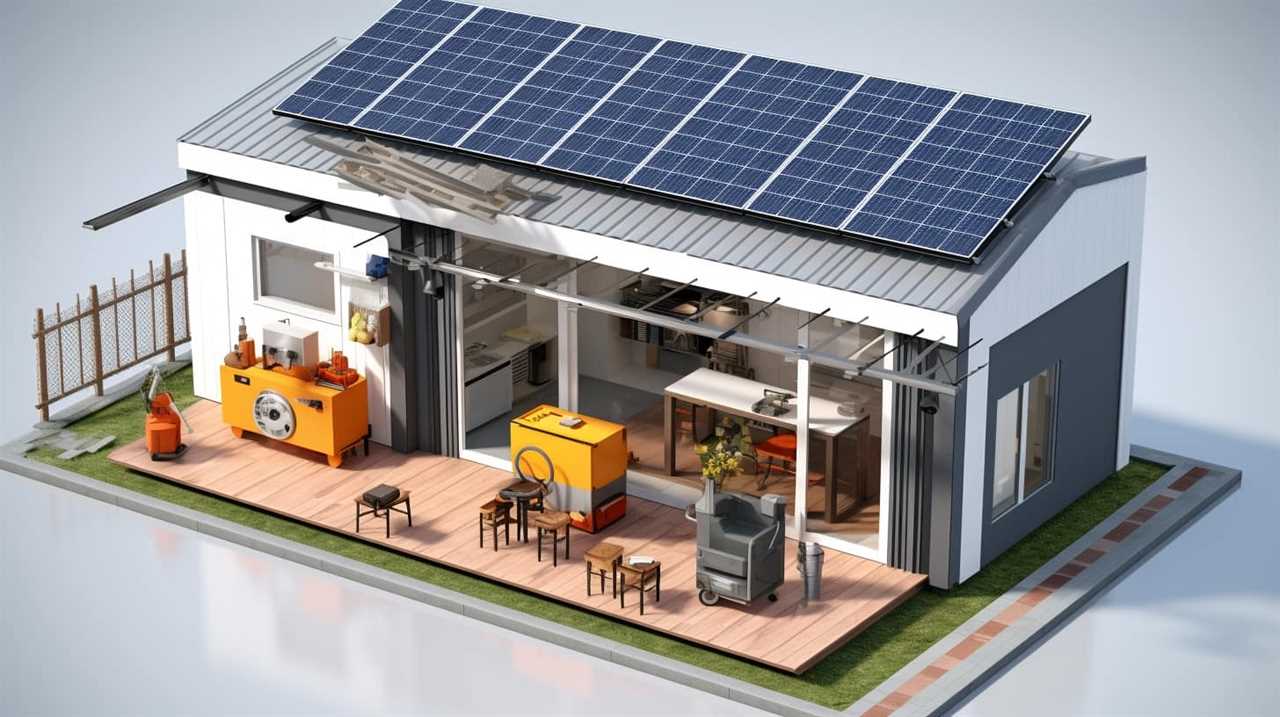
Aphids are small, pear-shaped insects that cluster on new leaves and buds.
Mealybugs are covered in a white, waxy substance and can be found on the undersides of leaves and in leaf axils.
Whiteflies, as the name suggests, are tiny white insects that fly around when disturbed.
An infestation of these tiny white bugs can cause significant damage to your house plants. Signs of infestation include yellowing leaves, stunted growth, distorted foliage, and a sticky residue called honeydew on the leaves. Furthermore, these pests can transmit plant diseases, weaken the plant’s immune system, and attract other pests.
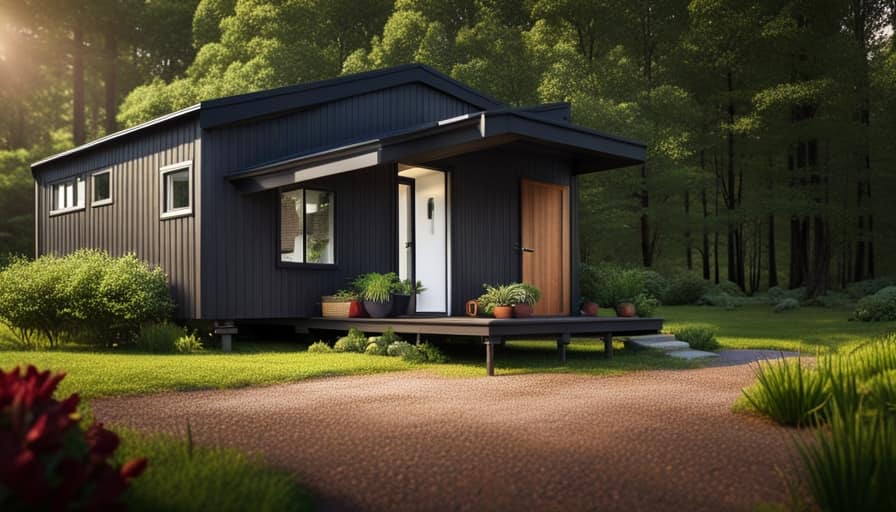
Understanding the causes of infestation is crucial in effectively getting rid of these tiny white bugs on your house plants.
Understanding the Causes of Infestation
Understanding the causes of infestation is essential in effectively eliminating these tiny white bugs on my house plants. Here are a few key factors to consider:
- Lack of proper plant care: Neglecting to provide adequate water, sunlight, and nutrients can weaken plants, making them more susceptible to bug infestations.
- Overwatering: Excessive moisture can create a favorable environment for pests like aphids and mealybugs.
- Bringing infested plants indoors: Introducing plants from outside without proper inspection can bring unwanted bugs into your home.
Recognizing the signs of bug damage is crucial for preventing infestation. Look out for yellowing, wilting leaves, sticky residue on leaves and stems, and tiny white bugs crawling on the plant’s surface.
Now that we understand the causes of infestation, let’s explore natural remedies to eliminate these pesky bugs.
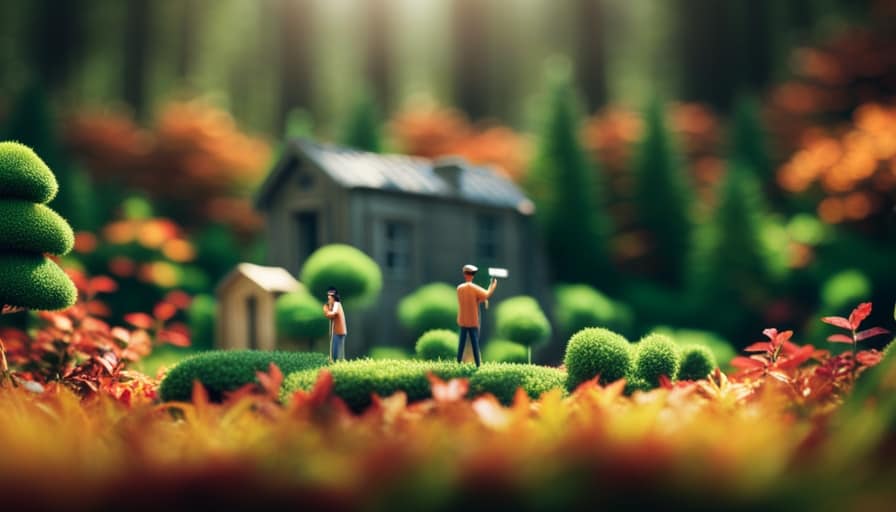
Natural Remedies to Eliminate the Bugs
To effectively get rid of these tiny white bugs on my house plants, I’ll need to rely on natural remedies that can eliminate them without harming the plants.
One effective option is to create homemade insecticides using ingredients readily available in your kitchen. You can mix a solution of water and dish soap, or water and neem oil, and spray it directly on the affected plants. These solutions work by suffocating the pests and disrupting their feeding patterns.
Another natural approach is to introduce insect-repelling plants into your garden. Plants like lavender, mint, and marigold emit fragrances that repel insects, keeping them away from your precious plants.
Chemical Solutions for a Lasting Bug-Free Environment
One effective chemical solution for achieving a bug-free environment is using a professional-grade insecticide spray. These sprays are specifically formulated to target and eliminate pests, including tiny white bugs on house plants. When using a professional-grade insecticide spray, it’s important to follow the instructions provided by the manufacturer to ensure safe and effective use.
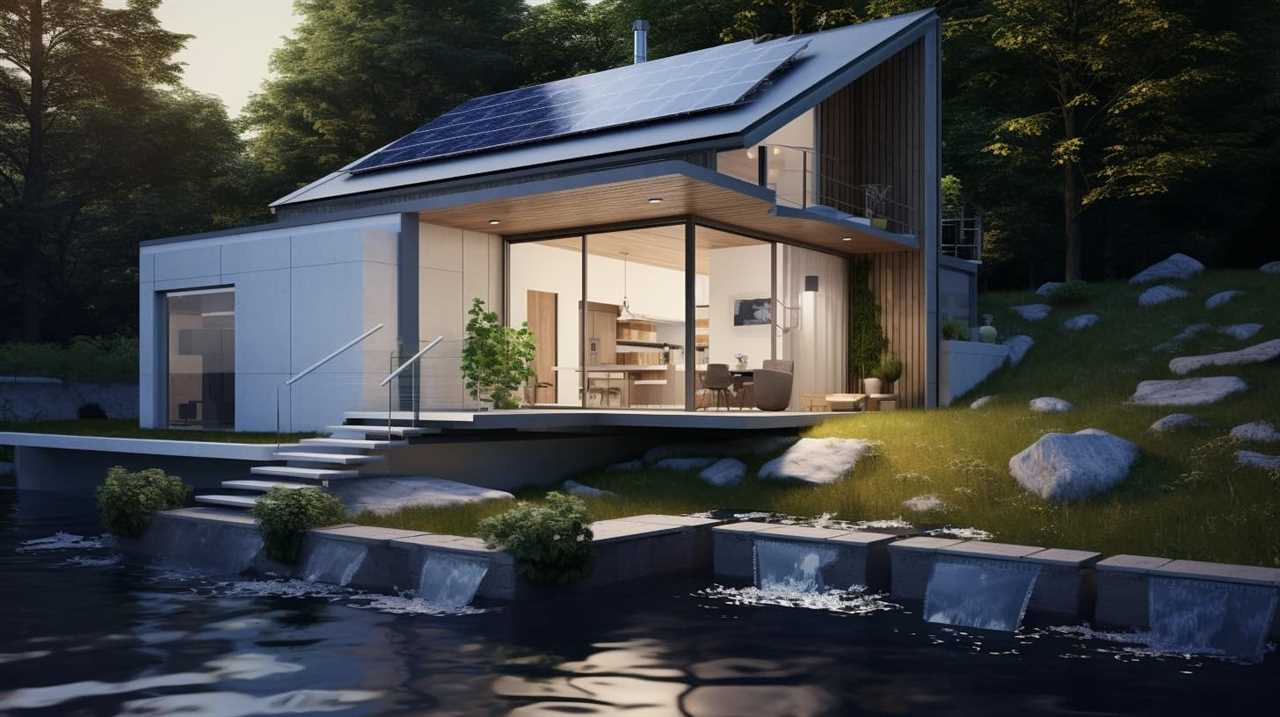
Additionally, consider these non-toxic alternatives to chemical solutions for pest control:
-
Neem oil: Derived from the neem tree, neem oil is a natural insecticide that can be effective against a wide range of pests. It works by disrupting the insect’s life cycle and repelling them from plants.
-
Insecticidal soap: Made from potassium salts of fatty acids, insecticidal soap works by suffocating pests on contact. It’s safe to use on most plants and can be an effective solution against white bugs.
-
Diatomaceous earth: This powdery substance is made from fossilized remains of diatoms and acts as a desiccant, drying out and killing insects.
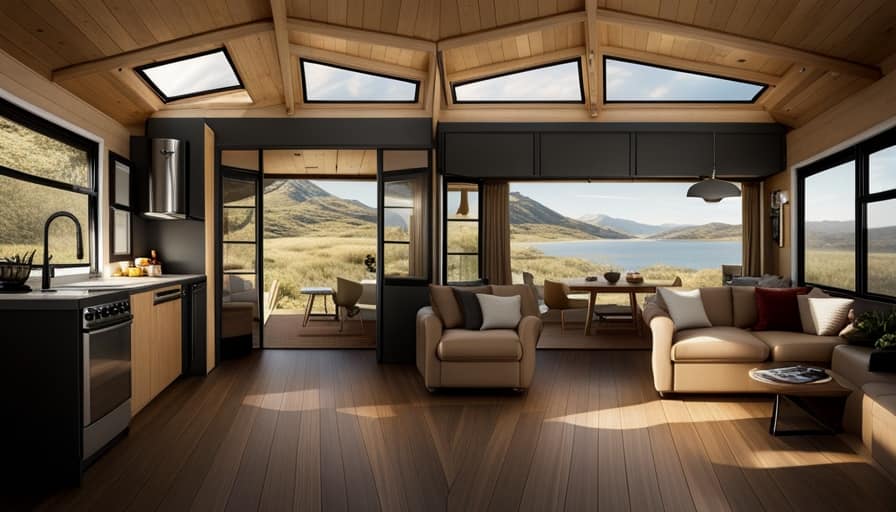
When using any chemical solution or non-toxic alternative, it’s essential to monitor the plants closely and repeat the treatment as necessary to maintain a bug-free environment. Professional pest control services can also provide expert guidance and assistance in achieving long-lasting results.
Preventing Future Infestations and Maintaining Healthy House Plants
To effectively prevent future infestations and maintain healthy house plants, I will implement a regular cleaning and inspection routine. This will help ensure that any signs of pests or diseases are detected early on and addressed promptly. Regularly cleaning the leaves and stems of my plants with a mild soap and water solution will help remove any dust or debris that can attract pests. Additionally, I will inspect the plants for any signs of infestation, such as white bugs or sticky residue on the leaves. To further enhance plant hygiene, I will also consider using beneficial insects, such as ladybugs or lacewings, which feed on common plant pests like aphids. By incorporating these practices into my routine, I can maintain healthy house plants and prevent future infestations.
| Regular Cleaning | Inspection Routine | Using Beneficial Insects |
| Remove dust and debris | Check for signs of infestation | Introduce ladybugs or lacewings to control pests |
| Promotes plant hygiene | Detect and address issues early | Natural pest control method |
| Prevents pest attraction | Maintain healthy house plants | Encourages ecosystem balance |
Frequently Asked Questions
Can These Tiny White Bugs Harm Humans?
Yes, tiny white bugs on house plants can harm humans. They can cause skin irritations and allergic reactions. It’s important to take steps to prevent infestations, such as regularly inspecting and cleaning your plants.
How Long Does It Take for Natural Remedies to Eliminate the Bugs Completely?
To completely eliminate the tiny white bugs using natural remedies, it typically takes a few weeks of consistent application. However, the effectiveness of these remedies can vary. It’s important to avoid common mistakes like under-applying or using incorrect remedies.
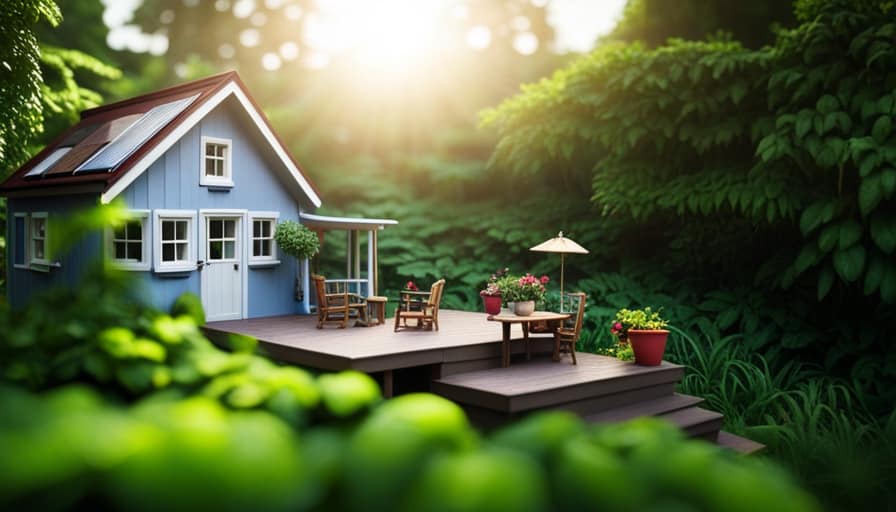
Are There Any Specific Types of House Plants That Are More Prone to Infestations?
Certain house plants, like lavender and marigolds, have natural repellent properties that can help prevent infestations. It’s important to choose plants that are known to repel bugs and to regularly inspect and clean your plants to avoid any potential infestations.
Can These Bugs Spread From One House Plant to Another?
Oh, the joy of tiny white bugs on house plants! Yes, these pests can spread from one plant to another. To control them, use insecticides and watch out for signs of infestation like sticky residue or wilting leaves.
How Often Should I Check My House Plants for Signs of Infestation?
I check my house plants for signs of infestation regularly to ensure their health. Common signs include tiny white bugs and yellowing leaves. Preventative measures like proper watering and cleaning can help keep plants bug-free.
Conclusion
In conclusion, taking care of our house plants goes beyond watering and sunlight. Identifying and eliminating tiny white bugs is a crucial part of maintaining a healthy environment for our plants.
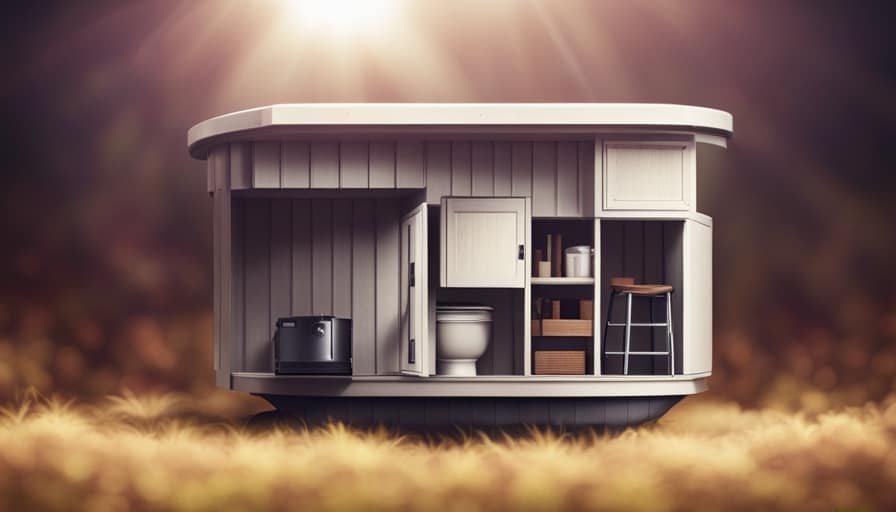
By understanding the causes of infestation and using natural or chemical remedies, we can ensure a bug-free environment. Remember, prevention is key, so regularly inspect your plants and take necessary measures to keep them thriving.
Happy gardening!
I’m Theodore, and I love tiny houses. In fact, I’m the author of Tiny House 43, a book about tiny houses that are also tree houses. I think they’re magical places where imaginations can run wild and adventures are just waiting to happen.
While tree houses are often associated with childhood, they can be the perfect adult retreat. They offer a cozy space to relax and unwind, surrounded by nature. And since they’re typically built on stilts or raised platforms, they offer stunning views that traditional homes simply can’t match.
If you’re looking for a unique and romantic getaway, a tree house tiny house might just be the perfect option.
Beginners Guides
How Do I Get Rid of Tiny Moths in My House

I have experienced the frustration of dealing with tiny moths flying around my food in the kitchen. But do not worry, I have a solution for you.
In this article, I’ll show you how to banish those pesky moths from your house for good. We’ll dive into identifying different moth species, understanding what attracts them, and simple prevention techniques you can implement.
Plus, I’ll share some natural remedies and professional options as a last resort. Say goodbye to those unwanted guests!
Key Takeaways
- Identifying the specific moth species is crucial for implementing targeted control measures.
- Moths are attracted to food sources, fabrics, and organic materials, so it’s important to store food in airtight containers and keep the house clean.
- Moths prefer dark, undisturbed areas to lay their eggs, so sealing cracks and openings in walls, windows, and doors can help prevent infestation.
- If natural remedies and DIY methods fail, it is advisable to seek professional pest control services for thorough inspection and tailored treatment plans.
Identifying the Culprits: What Type of Moth Is Invading Your Home
I can’t figure out what kind of moth is infesting my home. It’s frustrating not knowing the exact species, as different moths have different behaviors and habits. Identifying the culprits is crucial in order to effectively address the problem.

There are several common moth species that are known to invade homes, such as the Indian mealmoth, clothes moth, and pantry moth. Each species has distinct characteristics that can help with identification. Understanding their behavior is also important as it can give insights into their lifecycle and potential sources of infestation.
Moths are attracted to food sources, fabrics, and other organic materials. They can lay eggs in stored grains, textiles, or even pet food. By understanding the specific species and their behavior, it becomes easier to implement targeted control measures and prevent further infestations.
Understanding the Infestation: Why Are Moths Attracted to Your House
To effectively address the infestation, it’s essential to understand why moths are attracted to your house. Here are four reasons why moths may be flocking to your home:
-
Food sources: Moths are attracted to food, especially grains, cereals, and dried fruits. They can easily find their way into your pantry and feast on these items.
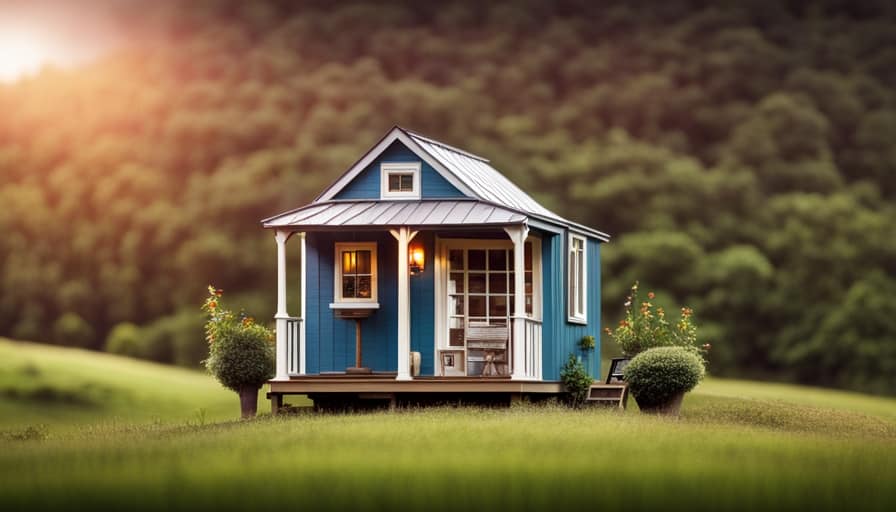
-
Moisture and humidity: Moths thrive in damp environments, making your house an ideal breeding ground if there are areas with high humidity or water leaks.
-
Suitable habitat: Moths are drawn to dark, undisturbed areas where they can lay their eggs undisturbed. This includes closets, attics, and basements.
-
Outdoor attraction: Moths can be attracted to your house from the outside, especially if you have outdoor lights that are left on at night.
Understanding moth behavior and their attraction to your house is crucial in preventing further infestation. By addressing these factors, you can take steps to keep moths at bay and protect your home.

Here are some moth prevention tips:
- Store food in airtight containers.
- Keep your house clean and free of crumbs or spills.
- Fix any leaks or moisture issues promptly.
- Use moth repellents or traps in vulnerable areas.
Prevention Is Key: Simple Steps to Keep Moths From Entering Your Home
Prevention is essential, so I’ll share some simple steps to keep moths from entering your home. By taking a proactive approach, you can create an inhospitable environment for moths and minimize the risk of infestations. One effective method is to use moth repellent products, such as sachets or sprays, in areas where moths are commonly found. These repellents contain chemicals that deter moths from entering your home. Additionally, it is crucial to seal any cracks or openings in your walls, windows, and doors. Moths can easily slip through these tiny gaps, so using caulk or weatherstripping can help keep them out. Regularly vacuuming and cleaning your home can also eliminate moth eggs or larvae that may be hiding in carpets or corners. By implementing these preventive measures, you can ensure a moth-free home environment.
| Steps to Keep Moths Away | |
|---|---|
| Use moth repellent products | Seal cracks and openings |
| Regularly vacuum and clean |
Natural Remedies: Non-Toxic Solutions to Get Rid of Moths
One effective way to get rid of moths naturally is by using a combination of vinegar and water to create a non-toxic moth spray. Here are some natural remedies you can try:
-
Vinegar and water spray: Mix equal parts vinegar and water in a spray bottle. Spray this solution on areas where moths are present, such as closets, drawers, and pantry shelves. The strong odor of vinegar repels moths and prevents them from laying eggs.
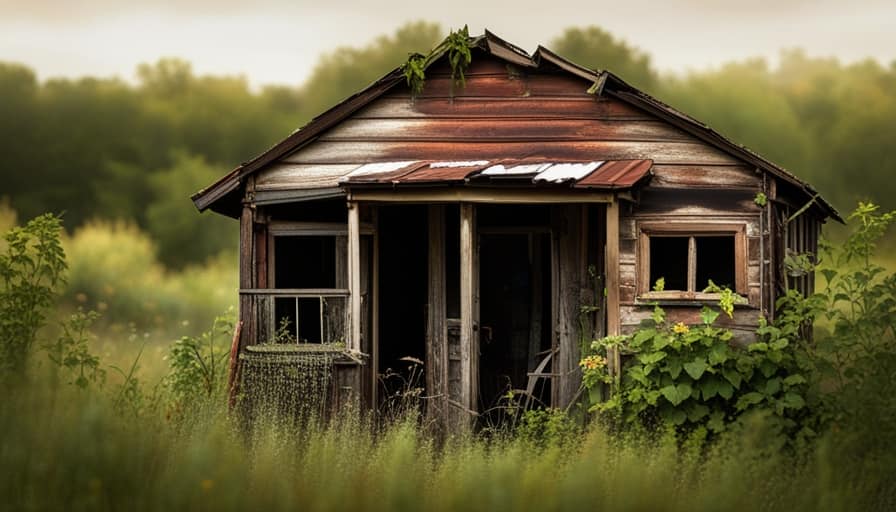
-
Cedar chips: Moths dislike the smell of cedar, so placing cedar chips in your closets and drawers can help deter them. You can also use cedar oil or cedar sachets for the same effect.
-
Homemade traps: Create simple moth traps by placing a mixture of vinegar, sugar, and dish soap in a bowl. The sweet scent attracts moths, and the dish soap traps them when they try to land on the mixture.
-
Lavender sachets: Moths are repelled by the fragrance of lavender. Place dried lavender in small sachets and tuck them in your clothing drawers or hang them in your closets.
These natural repellents and homemade traps can help you get rid of moths without using toxic chemicals. However, if these methods fail to eliminate the infestation, it may be time to consider professional pest control options.
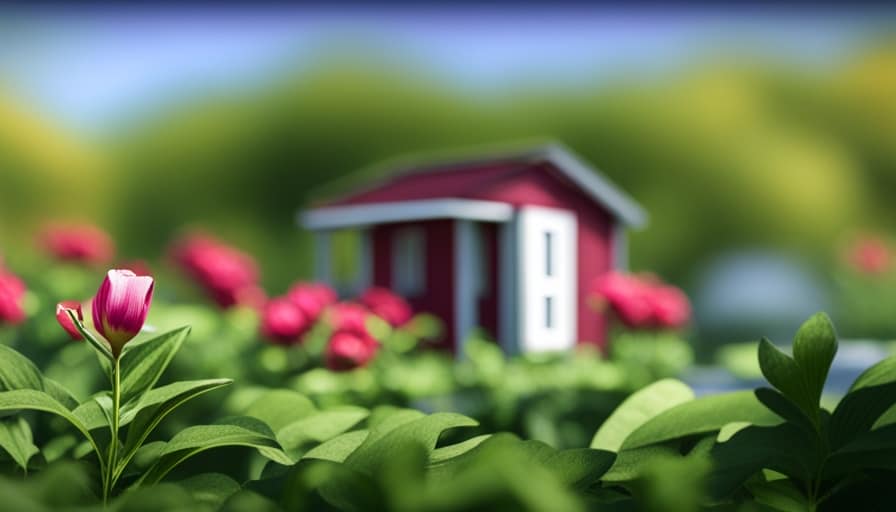
Last Resort: When All Else Fails, Professional Pest Control Options
If I’ve exhausted all other options, I’ll contact a professional pest control service to eliminate the moth infestation in my house. While natural remedies and DIY methods can be effective for small infestations, sometimes the problem persists or worsens despite our best efforts.
This is when it’s crucial to call in the experts. Professional pest control services have the knowledge, experience, and resources to effectively eradicate moth infestations. They’ll conduct a thorough inspection of your home to identify the source of the infestation and develop a tailored treatment plan.
The benefits of hiring professionals include their expertise in identifying different moth species, their access to specialized equipment and pesticides, and their ability to ensure the complete eradication of the infestation.
When all else fails, it’s best to rely on the expertise of professional pest control services to rid your home of those persistent moths.

Frequently Asked Questions
Can Moths Cause Any Damage to My House or Belongings?
Moths can cause damage to fabrics, carpets, and stored food. It’s important to address a moth infestation promptly. Using natural moth repellents, like lavender or cedar, can help deter them from your house and protect your belongings.
Are All Types of Moths Attracted to Homes, or Are There Specific Species That Are More Common?
In the world of moths, certain species have a penchant for our cozy homes. Understanding the types commonly found indoors can help us prevent the dreaded infestations from taking hold in the first place.
How Long Does It Usually Take to Get Rid of a Moth Infestation Using Natural Remedies?
Using natural remedies to get rid of a moth infestation can be effective, but the time it takes varies depending on the severity. Common signs of an infestation include sightings of adult moths and larvae, as well as damaged fabrics or food products.
Can Moths Carry Diseases or Pose a Health Risk to Humans?
Moths can transmit diseases to humans, so it’s important to take precautions. Individuals with allergies or asthma may experience respiratory issues due to moth infestations in homes.

Are There Any Specific Plants or Herbs That Repel Moths and Can Be Used as Natural Remedies?
Using natural moth repellents, such as specific plants and herbs, offers several benefits over chemical alternatives. Creating a moth repelling garden with lavender, rosemary, and mint can effectively deter moths from your house.
Conclusion
In conclusion, it’s essential to address the presence of these minuscule pests in your home promptly. By identifying the specific type of moth invading your space and understanding their attraction, you can take preventive measures to keep them at bay.
Utilizing natural remedies and seeking professional pest control services as a last resort will ensure a moth-free environment without compromising your household’s well-being.
Stay vigilant and employ these effective methods to bid farewell to these unwelcome visitors.
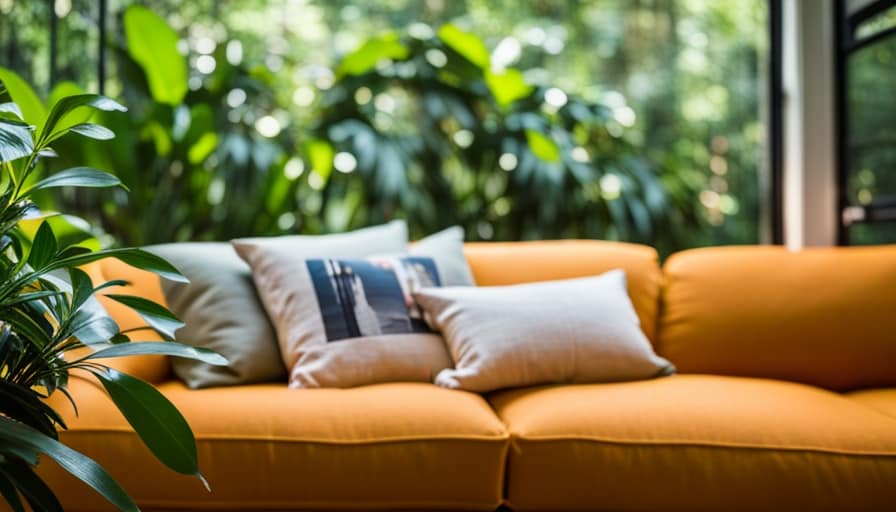
I’m Theodore, and I love tiny houses. In fact, I’m the author of Tiny House 43, a book about tiny houses that are also tree houses. I think they’re magical places where imaginations can run wild and adventures are just waiting to happen.
While tree houses are often associated with childhood, they can be the perfect adult retreat. They offer a cozy space to relax and unwind, surrounded by nature. And since they’re typically built on stilts or raised platforms, they offer stunning views that traditional homes simply can’t match.
If you’re looking for a unique and romantic getaway, a tree house tiny house might just be the perfect option.
Beginners Guides
How Difficult Is It to Build a Tiny House in Colorado Springs

I understand your concerns about building a tiny house in Colorado Springs. However, I can assure you that with the proper knowledge and guidance, it is completely achievable.
In this article, I’ll walk you through the zoning regulations, permitting process, finding suitable land, and navigating building codes. We’ll also discuss securing financing, budgeting, and dealing with utilities.
So, if you’re ready to embark on this rewarding journey, let’s dive in and make your tiny house dreams a reality.
Key Takeaways
- Zoning regulations and building permits are required for constructing a tiny house in Colorado Springs.
- Finding suitable land that complies with zoning regulations is important for placing a tiny house.
- Familiarizing oneself with local building codes and regulations, and following safety guidelines is necessary.
- Researching various financing options and presenting a detailed budget can increase the chances of securing financing for building a tiny house.
Zoning Regulations and Permitting Process
I’ll need to research the zoning regulations and permitting process before starting to build my tiny house in Colorado Springs. Understanding these regulations is crucial as they dictate where and how I can construct my tiny house.
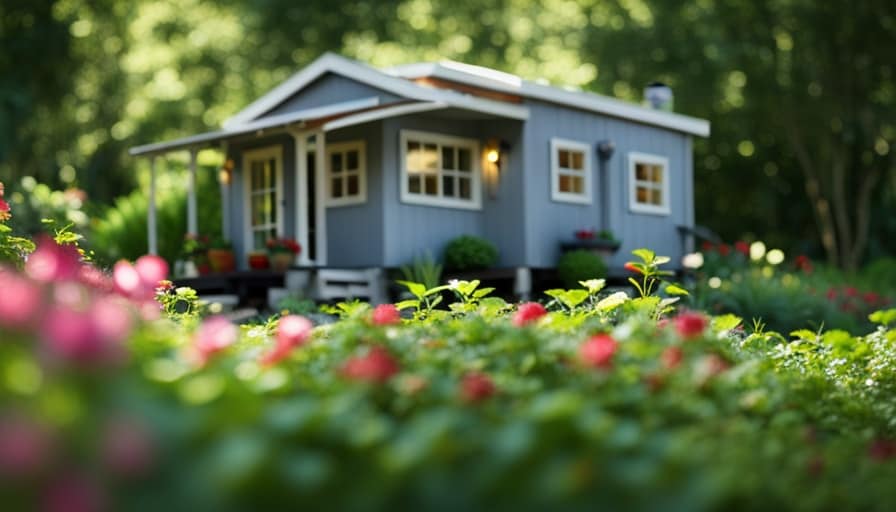
One key aspect to consider is the impact of tiny houses on property values. While some argue that they can decrease property values, others believe that they can actually increase them by adding diversity and uniqueness to the community.
Additionally, one of the challenges I may face is finding legal parking for my tiny house in urban areas. Many cities have restrictions on where tiny houses can be parked, making it essential to find suitable parking options that comply with local regulations.
With these factors in mind, I can now move on to finding suitable land for my tiny house.
Finding Suitable Land for Your Tiny House
After researching the zoning regulations and permitting process, it’s now time to start finding suitable land for my tiny house in Colorado Springs.
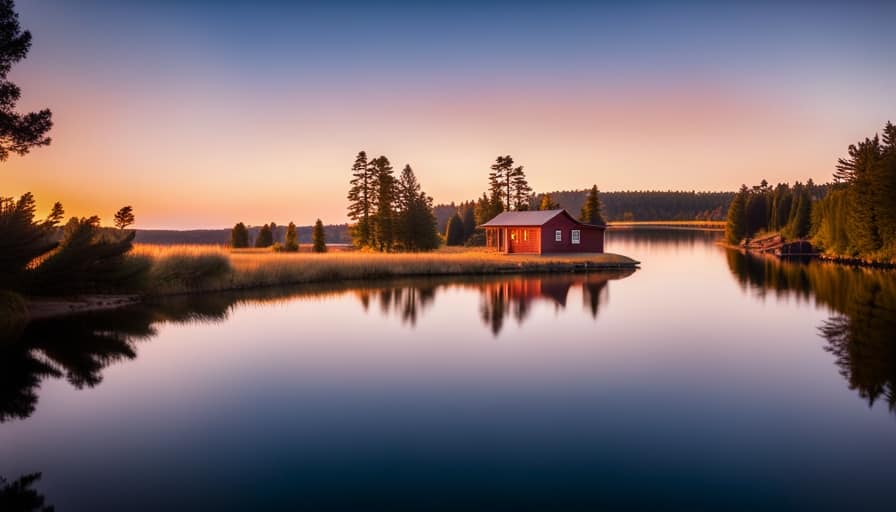
When it comes to finding land for a tiny house, there are a few important factors to consider. One of the major challenges is land availability constraints. Due to the increasing popularity of tiny houses, finding land that allows for their construction can be difficult. It’s important to do thorough research and explore different options, such as contacting local real estate agents or checking online platforms that specialize in tiny house-friendly land.
Additionally, environmental impact considerations are crucial. It’s important to choose a location that minimizes the impact on the surrounding environment and aligns with sustainable practices.
Taking these factors into account will ensure that I find a suitable piece of land for my tiny house in Colorado Springs.
Navigating Building Codes and Inspections
When it comes to navigating building codes and inspections for my tiny house in Colorado Springs, I’ll need to familiarize myself with the local regulations and ensure compliance throughout the construction process. Understanding local regulations is crucial to avoid any legal issues and ensure that my tiny house meets all the necessary requirements.
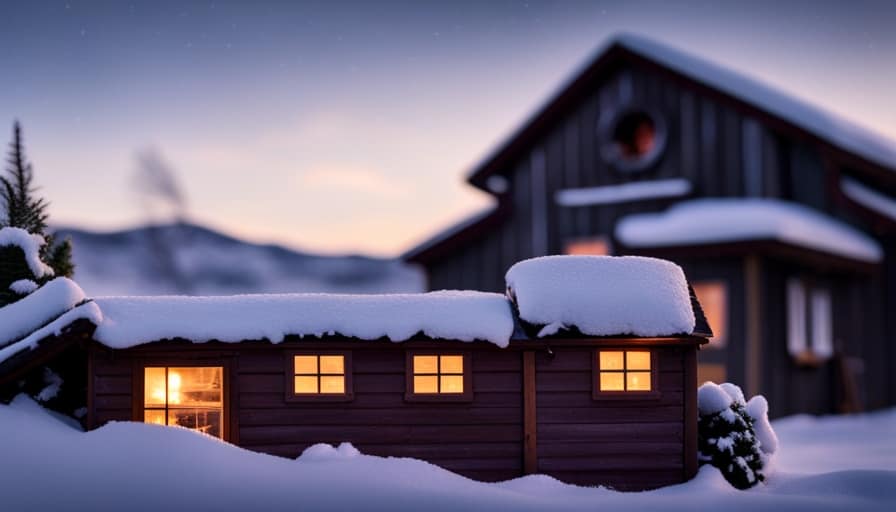
This includes obtaining proper permits, adhering to zoning laws, and following safety guidelines. To ensure a smooth process, I may consider hiring a professional builder who’s well-versed in local building codes and has experience with tiny house construction. Their expertise and knowledge will help me navigate the intricacies of the regulations and ensure that my tiny house is built according to the highest standards.
By understanding the local regulations and working with a professional builder, I can confidently proceed with my project while complying with all necessary codes and inspections.
With the building codes and inspections in mind, the next step is to secure financing and budget for my tiny house project.
Securing Financing and Budgeting for Your Project
To successfully secure financing and budget for my tiny house project in Colorado Springs, I frequently need to research various lenders and explore different funding options. Securing loans for a tiny house can be challenging, as it’s a unique type of project and not all lenders may be familiar with it. However, there are lenders who specialize in providing loans specifically for tiny houses.
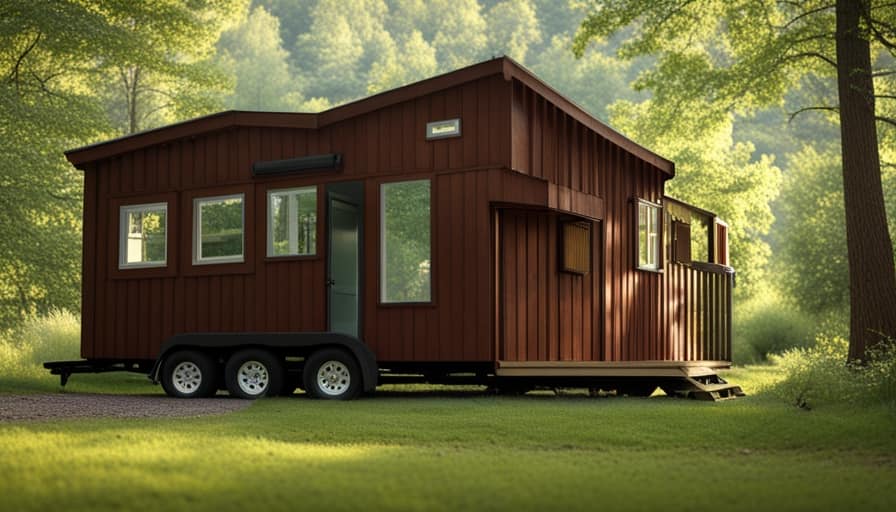
It’s important to gather all the necessary documents and information required by the lenders, such as the cost estimation of the project, including materials, labor, and any additional expenses. By presenting a thorough and well-prepared budget, it increases the chances of securing financing for the project.
Once the financing is secured, it becomes easier to move forward with the next steps of the project, such as dealing with utilities and exploring off-grid options.
Dealing With Utilities and Off-Grid Options
I can explore both traditional utility options and off-grid alternatives when dealing with electricity, water, and sewage in my tiny house in Colorado Springs.
When it comes to off-grid power, there are several options available. Solar panels are a popular choice, harnessing the energy of the sun to generate electricity. Wind turbines can also be used to generate power, particularly in areas with consistent wind patterns. Additionally, hydroelectric power can be harnessed if there’s a suitable water source nearby.
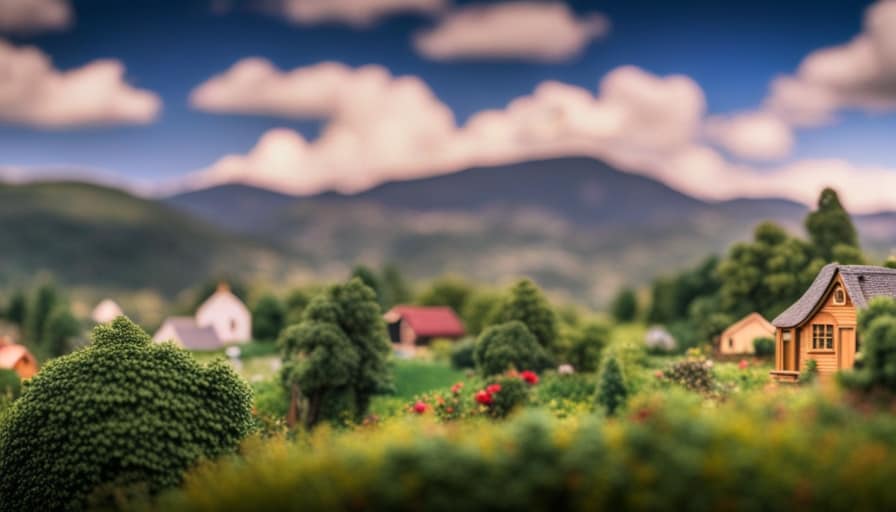
As for water sources, rainwater collection systems can be installed to capture and store rainwater for household use. Digging a well is another option, although it may require permits and additional expenses.
Lastly, composting toilets can be used to manage sewage in an off-grid tiny house, eliminating the need for traditional plumbing systems.
Frequently Asked Questions
What Are the Advantages of Building a Tiny House in Colorado Springs Compared to Other Cities in Colorado?
Building a tiny house in Colorado Springs has many advantages compared to other cities in Colorado. The city has a thriving tiny house community, supportive regulations, and an abundance of natural beauty to enjoy.
Are There Any Specific Design Requirements for Tiny Houses in Colorado Springs?
There are specific design requirements for tiny houses in Colorado Springs, including building regulations that must be followed. It is important to be knowledgeable about these requirements to ensure a successful and compliant build.

How Long Does the Zoning and Permitting Process Usually Take in Colorado Springs?
The zoning and permitting process in Colorado Springs can be a challenge. It takes time to navigate through the requirements and obtain the necessary approvals. However, with proper guidance and patience, it is possible to build a tiny house in Colorado Springs.
Are There Any Restrictions on Living in a Tiny House on Wheels in Colorado Springs?
Living in a tiny house on wheels in Colorado Springs comes with restrictions. Tiny house parking options are limited, and building codes for tiny houses must be followed. It can be challenging, but not impossible.
Can I Rent Out My Tiny House as an Airbnb in Colorado Springs?
Renting out a tiny house as an Airbnb in Colorado Springs is possible, but there are regulations to follow. It’s important to familiarize yourself with local zoning laws and obtain any necessary permits before listing your tiny house as a rental property.
Conclusion
Building a tiny house in Colorado Springs may be challenging due to zoning regulations, finding suitable land, navigating building codes, securing financing, and dealing with utilities.
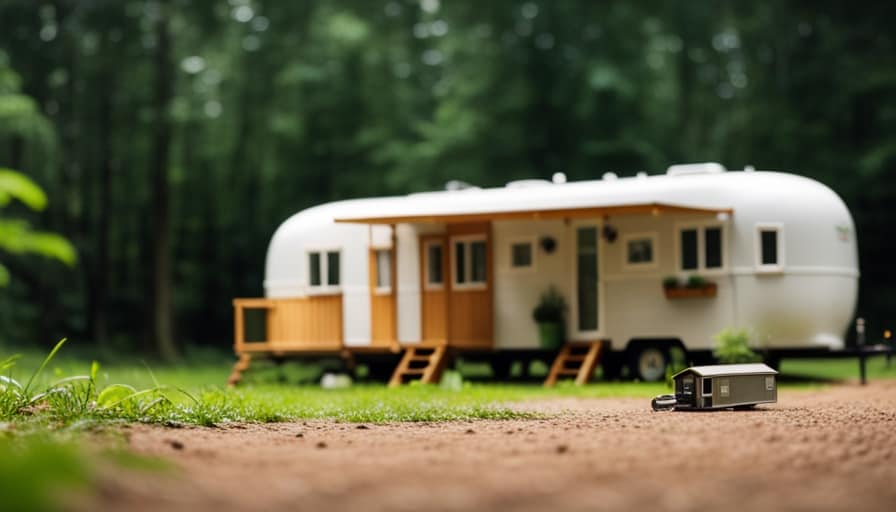
However, with determination and thorough research, it’s possible to overcome these obstacles.
For example, Sarah, a Colorado Springs resident, successfully built her own off-grid tiny house by carefully selecting land outside city limits, obtaining the necessary permits, and utilizing solar power.
Her experience demonstrates that with proper planning and knowledge, building a tiny house in Colorado Springs can be a rewarding and sustainable endeavor.
I’m Theodore, and I love tiny houses. In fact, I’m the author of Tiny House 43, a book about tiny houses that are also tree houses. I think they’re magical places where imaginations can run wild and adventures are just waiting to happen.
While tree houses are often associated with childhood, they can be the perfect adult retreat. They offer a cozy space to relax and unwind, surrounded by nature. And since they’re typically built on stilts or raised platforms, they offer stunning views that traditional homes simply can’t match.
If you’re looking for a unique and romantic getaway, a tree house tiny house might just be the perfect option.
-

 Beginners Guides2 weeks ago
Beginners Guides2 weeks agoHow To Buy A Tesla Tiny House
-

 Energy Efficiency2 months ago
Energy Efficiency2 months agoBest Tiny Homes For Cold Climates
-

 Beginners Guides1 week ago
Beginners Guides1 week agoTiny House Nation Where Are They Now Stephanie
-

 Tiny House Resources (e.g., legalities, cost, insurance, FAQs)2 months ago
Tiny House Resources (e.g., legalities, cost, insurance, FAQs)2 months agoDo Tiny Homes Need Planning Permission?
-

 Beginners Guides3 weeks ago
Beginners Guides3 weeks agoFrom The Show Tiny House Nation How Many Keep Their Tiny House?
-

 Beginners Guides2 months ago
Beginners Guides2 months agoUsing a Climbing Net For Treehouse Construction
-

 Beginners Guides2 months ago
Beginners Guides2 months agoHow to Build a Treehouse Without Drilling Into the Tree
-

 Beginners Guides3 weeks ago
Beginners Guides3 weeks agoTiny House Nation Who Pays For The Houses





